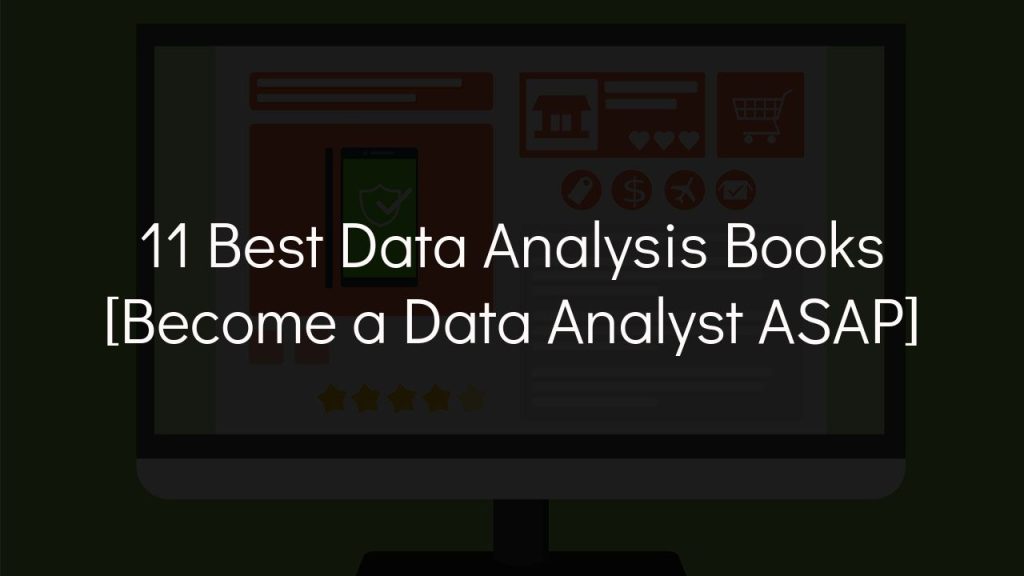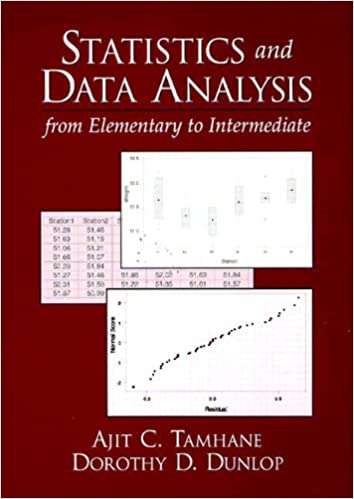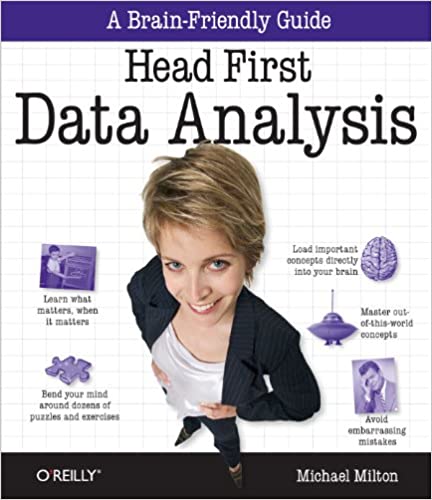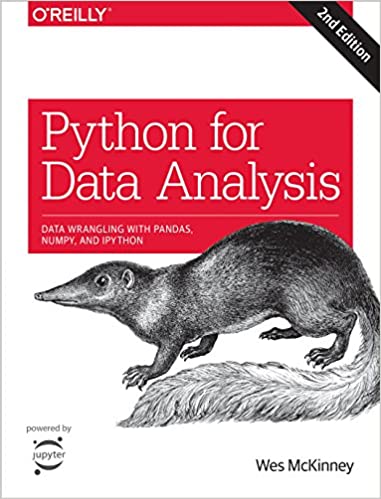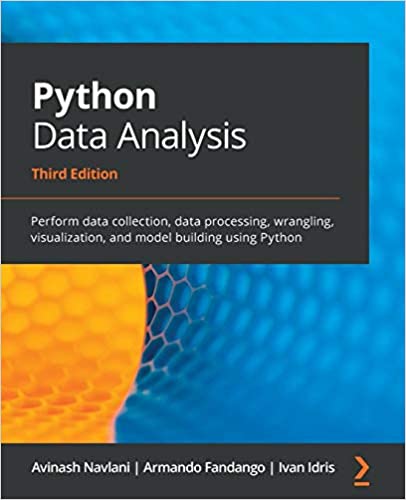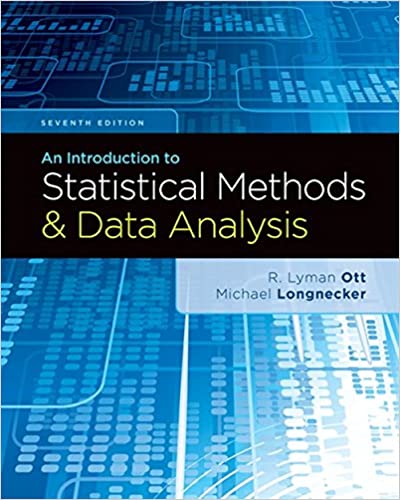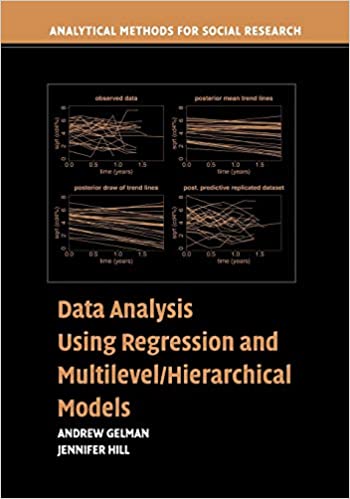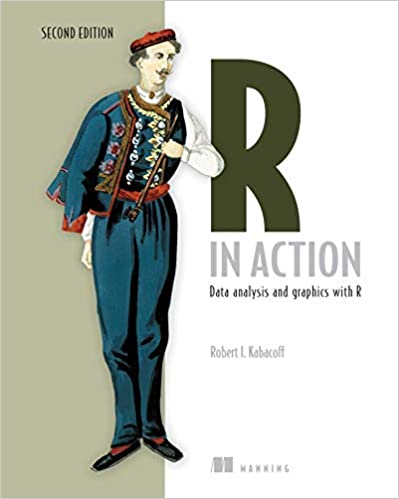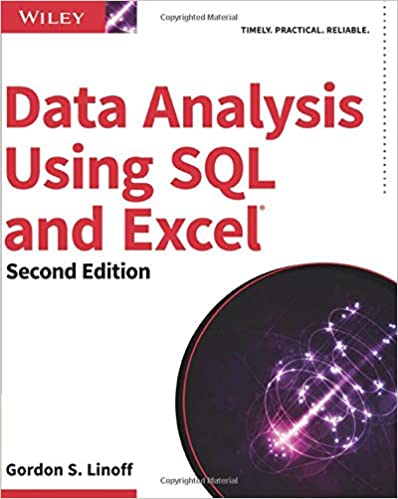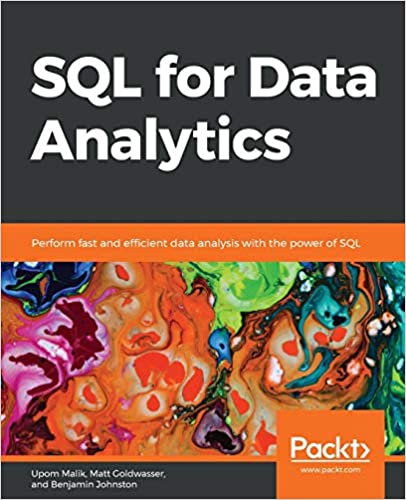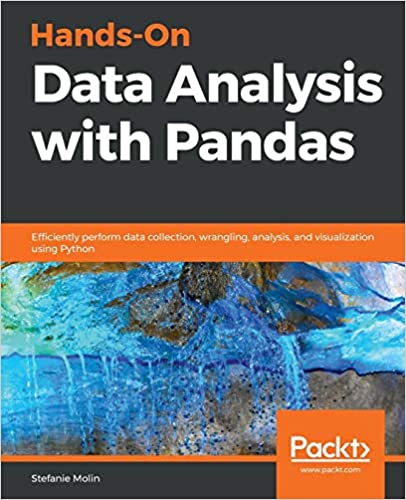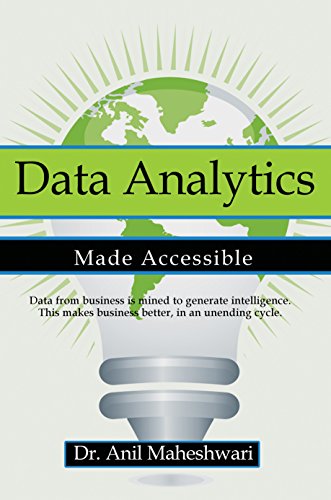🧠 According to Salary.com, data analysts earn an average of $77,636 per year.
But becoming a data analyst takes a lot of dedication and hard work.
Not to worry.
We picked the best data analysis books to get you started on your data analyst journey today.
What is data analysis?
Data analysis is the process of collecting and storing data on things like market research and sales numbers.
A data analyst then inspects, cleans and transforms the data to make presentable, understandable models. These models enable business leaders and shareholders to make better decisions.
This post contains affiliate links. I may receive compensation if you buy something. Read my disclosure for more details.
TLDR: Data Analysis Books
🔥 Best Overall 🔥
Python Data Analysis
💥 Best for Newbies 💥
Head First Data Analysis
💸 Best Value 💸
Data Analytics Made Accessible
Data Analysis Books
1. Statistics and Data Analysis: From Elementary to Intermediate
🚨 Ideal for: academic learners
💥 Major topics: collecting, summarizing and exploring data, probability
Statistics and Data Analysis by Ajit Tamhane and Dorothy Dunlop focuses on the interpretation of results. So there’s a strong emphasis on computer assisted data analysis.
You’ll start by learning basic concepts and methods of modern statistics.
Some of what you’ll examine includes:
- probability
- collecting data
- summarizing and exploring data
Then you’ll explore sampling distributions of statistics. In addition, you’ll tackle the basics of inference, linear regression and correlation.
Statistics and Data Analysis is one of the best data analysis books if you learn best in an academic setting.
Want to take a course in data analysis? Check out Exploratory Data Analysis in SQL on DataCamp.
2. Head First Data Analysis
🚨 Ideal for: data analysis newbies
💥 Major topics: collecting and organizing data, data models, communication
Head First Data Analysis by Michael Milton is one of the best data analysis books for beginners.
Using cognitive science and learning theory, you’ll immerse yourself in a multi-sensory learning environment. And with image-rich lessons, your brain will better understand concepts.
💡 Cognitive science is the study of the mind and its processes. It combines philosophy, psychology, computer science, linguistics, and neuroscience.
It will show you how to:
- collect and organize data
- find meaningful patterns
- predict the future
- draw conclusions
And present your findings.
In addition, you’ll learn how to determine which data sources to use to collect information.
You’ll also build basic data models to expose patterns, and design experiments to test and draw conclusions.
Finally, you’ll discover how to communicate your results to an audience.
🔥 Geena’s Hot Take
Head First has some of the best books you’ll find on tech-related topics. And Head First Data Analysis is no exception.
They use tips and tricks that are proven to help you effectively learn new concepts.
So if you want to really understand the core fundamentals of data analysis, we highly recommend that you buy this book.
Flourish, don’t flounder! 🐟
3. Python for Data Analysis
🚨 Ideal for: data analysts new to Python programming
💥 Major topics: data wrangling with pandas, NumPy and IPython
Python for Data Analysis by Wes McKinney is one of the best data analysis books for data wrangling with pandas, IPython and NumPy.
With this practical introduction to data science tools in Python, you’ll explore how to perform various tasks on Python datasets:
- manipulate
- process
- clean
- crunch
And beyond.
You’ll also explore how to create static, animated and interactive visualizations with matplotlib, a Python library.
This is a hands-on guide with plenty of real-world examples and case studies.
Python for Data Analysis is geared towards data analysts that are new to Python programming.

Most of your time is spent cleaning data, that’s what pandas was built for. I recommend this to any beginner.
– Ryan Wilkinson, Customer
Want to learn more about data analysis in Python? Check out the course Python Data Analysis and Visualization on Educative.io.
4. Python Data Analysis
🚨 Ideal for: intermediate data analysts
💥 Major topics: data wrangling, data visualization, building models with Python
Python Data Analysis by Avinash Navlani, Armando Fandango, et al. is a practical guide to teach you how to understand data analysis pipelines.
You’ll start by learning statistical and data analysis fundamentals. Then by using machine learning algorithms, you’ll learn how to:
- collect data
- process data
- wrangle
- visualize
- build models
And more, all while using Python programming.
Then you’ll explore how to conduct time series analysis and signal processing using ARMA models.
You’ll work on plenty of real-world examples along the way to illustrate concepts such as analyzing textual and image data using natural language processing (NLP).
💡 Natural language processing enables computers to hear speech. Then it can interpret it and identify the important parts.
Finally, you’ll use the open source library Dask to discover parallel computing.
5. An Introduction to Statistical Methods and Data Analysis
🚨 Ideal for: statistics newbies
💥 Major topics: statistics, regression modeling, experimental deign
An Introduction to Statistical Methods and Data Analysis by R. Lyman Ott and Michael Longnecker is one of the best data analysis books for a broad overview of statistical methods.
It’s geared towards students who have no prior experience with statistics.
You’ll learn how to solve problems frequently encountered in research projects. You’ll also explore decision-making based on available data.
The first eleven chapters contain material usually found in introductory statistics courses. You’ll find plenty of case studies and examples to reinforce concepts.
Finally, you’ll encounter regression modeling and experimental design.
With An Introduction to Statistical Methods and Data Analysis, you’ll build your your skills to become a critical observer of statistical analyses.
6. Data Analysis Using Regression and Multilevel/Hierarchical Models
⚠️ WARNING: NOT FOR NEWBIES!
🚨 Ideal for: applied researchers
💥 Major topics: regression, poststratification, regression discontinuity
Data Analysis Using Regression and Multilevel/Hierarchical Models by Andrew Gelman and Jennifer Hill is for performing data analysis using linear and nonlinear regression and multilevel models.
It’s geared towards applied researchers, so is not one of the best data analysis books for beginners.
You’ll learn about many types of models. Then you’ll learn how to apply these models to available software packages.
While you go through tons of real-world data examples from the authors’ applied research, you’ll explore casual inference. This includes:
- regression
- poststratification
- regression discontinuity
And more.
You’ll also discover multilevel logistic regression and missing-data imputation.
You’ll find plenty of practical tips you can use for building, fitting and understanding models throughout Data Analysis Using Regression and Multilevel/Hierarchical Models.
7. R in Action: Data Analysis and Graphics with R
🚨 Ideal for: statistics beginners, those familiar with R
💥 Major topics: statistics, forecasting, data mining
R in Action: Data Analysis and Graphics with R by Dr. Rob Kabacoff provides a crash course in statistics. In addition, it covers methods for dealing with incomplete or messy data.
While mastering R programming’s graphical capabilities, you’ll explore how to present data visually. You’ll see ample examples that are related to science, technology and business.
Then you’ll spend time learning about forecasting, data mining and dynamic report writing.
💡 Data mining is used everywhere from sales to crime scenes. In fact, Los Angeles researchers were able to predict crimes within a 500-foot range.
In addition, you’ll discover:
- time series analysis
- cluster analysis
- classification methodologies
And beyond.
R in Action: Data Analysis and Graphics with R is one of the best data analysis books for familiarizing yourself with the powers of R programming.
8. Data Analysis Using SQL and Excel
🚨 Ideal for: data analysts interested in data mining
💥 Major topics: data mining, SQL, Excel
Data Analysis Using SQL and Excel by Gordon Linoff is one of the best data analysis books for data mining using SQL and Excel. These are the two most popular tools for data query and analysis.
You’ll explore how to extract useful business information from relational databases. Then you’ll learn how to design and perform analyses using SQL and Excel.
Data Analysis Using SQL and Excel has a companion website where you’ll find datasets and Excel spreadsheets.
Want to learn more about data analysis in Excel? Check out the course Data Analysis in Excel on DataCamp.
9. SQL for Data Analytics
🚨 Ideal for: SQL programmers
💥 Major topics: profiling, automation, identifying trends
SQL for Data Analytics by Upom Malik, Matt Goldwasser, and Benjamin Johnston is one of the best data analysis books for performing fast and efficient data analysis with SQL.
You’ll start by building upon your existing SQL skills. So you’ll learn to spot patterns and explain logic that’s hidden in data.
Then you’ll discover how to identify trends to unlock deeper insights.
In addition, you’ll work with different types of data in SQL including:
- time-series
- geospatial
- text
💡 Geospatial data represents features and objects on the Earth’s surface.
Finally, you’ll determine how to increase productivity by using profiling and automation.
By the end of this book, you should be able to use SQL to efficiently examine business scenarios and critically analyze data.
You should know the basics of SQL before reading SQL for Data Analytics.
…This book really helped me generate the necessary queries I needed to be able to properly grab, display and analyze the relevant data…
– Ryan W, Customer
10. Hands-On Data Analysis with Pandas
🚨 Ideal for: Python programmers
💥 Major topics: Python libraries, data wrangling, data visualization
Hands-On Data Analysis with Pandas by Stefanie Molin is one of the best data analysis books for using Python to:
- collect
- wrangle
- analyze
- visualize
And more with data.
But first you’ll start by learning how data analysts gather this data. Then you’ll explore machine learning concepts.
After that, you’ll learn how to work with Python libraries like:
- pandas
- NumPy
- matplotlib
- seaborn
- scikit-learn
And while using real-world datasets, you’ll conduct exploratory data analysis by calculating summary statistics and visualizing data.
After that, you’ll explore anomaly detection, regression and more to make predictions from past data.
By the end of Hands-On Data Analysis with Pandas, you’ll be able to use pandas for data visualization and analyses reproduction across multiple datasets.
11. Data Analytics Made Accessible
🚨 Ideal for: data analysis newbies
💥 Major topics: big data, artificial intelligence, data science
Data Analytics Made Accessible by Anil Maheshwari is a concise introduction to data analysis. Its conversational tone makes it easier to read.
You’ll find plenty of real-world examples and case studies with detailed explanations.
Meant to mimic a one-semester data analysis course, you’ll discover major data mining techniques and platforms.
You’ll learn about major concepts such as:
- Big Data
- artificial intelligence (AI)
- data science
And you’ll get a full Python tutorial.
Data Analytics Made Accessible is one of the best data analysis books for business, statistics and engineering students.
Data Analysis Books: Conclusion
Today we looked at data analysis books and three came out on top:
Best Overall
Python Data Analysis
Best for Newbies
Head First Data Analysis
Best Value
Data Analytics Made Accessible
So whether you’re looking for the cream of the crop, best for newbies, or the most value, we think there are data analysis books for every aspiring data analyst.
Up Next:
- Top 11 Python Books for Data Science This Year [Learn Data Science using Python]
- 19 Best Books for Data Structures [Learn Data Structures and Algorithms]
- 9 Best Data Science Courses for Beginners [+4 Data Science Learning Paths]
- Data Science for Non-Programmers [Educative Course Review]
- Best Data Science Interview Course [Educative vs DataCamp]
What are the best data analysis books?
We picked 3 data analysis books that we think are the best. Overall, we liked Python Data Analysis. For newbies, we think Head First Data Analysis is the way to go. And for best value, we prefer Data analytics Made Accessible.
Is the book Data Analytics Made Accessible worth it?
We think Data Analytics Made Accessible by Anil Maheshwari is worth it. It’s a concise introduction to data analysis. Its conversational tone makes it easier to read.
You’ll find plenty of real-world examples and case studies with detailed explanations. Meant to mimic a one-semester data analysis course, you’ll discover major data mining techniques and platforms. You’ll learn about major concepts such as Big Data, artificial intelligence (AI), and data science. And you’ll get a full Python tutorial. Data Analytics Made Accessible is one of the best data analysis books for business, statistics and engineering students.Is the book Head First Data Analysis Worth it?
Head First Data Analysis by Michael Milton is one of the best data analysis books for beginners. Using cognitive science and learning theory, you’ll immerse yourself in a multi-sensory learning environment. And with image-rich lessons, your brain will better understand concepts. It will show you how to collect and organize data, find meaningful patterns, predict the future, draw conclusions, and present your findings. In addition, you’ll learn how to determine which data sources to use to collect information. You’ll also build basic data models to expose patterns, and design experiments to test and draw conclusions.
Finally, you’ll discover how to communicate your results to an audience.
